Anya met Santa for the first time last night! She asked for binkies! :)

Anya met Santa for the first time last night! She asked for binkies! :)

Posted by The Web Diva at 6:52 PM 0 comments
Anya had her two month checkup today. She is doing great! Dr. Wieler commented on what a good natured baby she is. She was not happy about her four shots, but seemed to get over them pretty quickly.
Here are the latest stats:
Height: 22 1/3" (50th percentile)
Weight: 11 lbs 11 oz (75th percentile)
Head Circumference: 39 cm (50th percentile)
This is such a relief from when she was only in the 25th percentile for weight and wasn't gaining well! Dr. says not to worry that she's now gaining too much, babies often put on some extra weight at this age to prepare for all the activity coming up as she becomes more awake and more mobile!
Posted by The Web Diva at 6:51 PM 0 comments
Anya Argia Beebe
was born Saturday, October 14, 2006
at 6:41am at the Dent Beebe home
8lbs 10oz
20 1/2 inches
 | 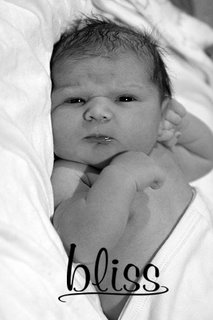 | 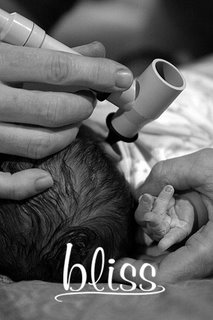 |
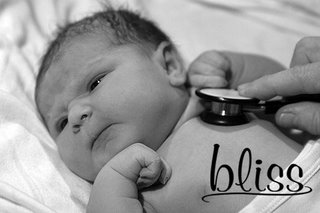
After a 3 ½ hour labor and water birth early in the morning, mom and baby are doing great.
You can view more pictures at blissstudio.net. Click on the preview link.
You can also view more photos in Our Photos.
Argia (pronounced ar-gee-ah) is my Italian great-grandmother on my dad's side.
Although I never met her, my dad's descriptions of her and the love she showed
he and my uncles made a big impression on me. The name is to honor both her and dad.
Posted by The Web Diva at 6:50 PM 0 comments
Wow! What a difference a few months makes! Take a look at 16 weeks for comparison. I'm huge!
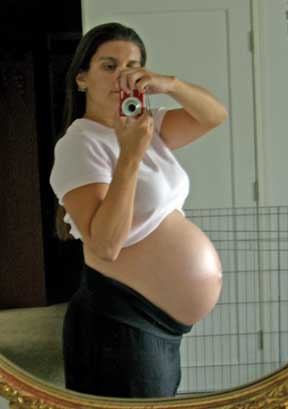
Posted by The Web Diva at 6:50 PM 0 comments
Many of you have been asking how the Narnian Nursery is shaping up. Thanks to many wonderful people, it's looking gorgeous! Mom and Dad painted the walls in various shades of spring green to start.
 | The room is oddly shaped, and opens into a little nook.
|
| Continuing around past the nook, we have the changing table and window. The built-in dresser is to the left behind the crib. The butterflies on the wall were made by myself and Grandma Pearl years ago. The mermaid wall hanging was made by one of my co-workers. |  |
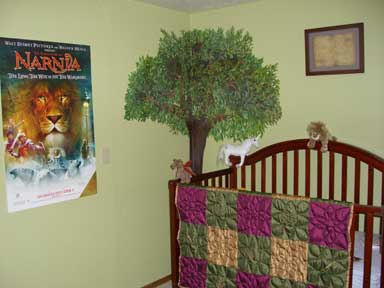 | Here's the crib and the other tree. An assortment of Narnian animals, including Aslan, Jewel the Unicorn, Mr. Beaver, Fledge the winged horse and Eustace as a dragon watch over the crib. The quilt was made by my best friend Jamie, and is embroidered with lions, crowns and swords with "Princess Anya" on the reverse side. |
Posted by The Web Diva at 6:49 PM 0 comments
Guess now!
To participate, go to:
http://www.expectnet.com/games/anyabeebe
or go to ExpectNet.com and enter anyabeebe as the
game name in the space indicated on the home page.
Posted by The Web Diva at 6:48 PM 0 comments
“Once a queen in Narnia, always a queen in Narnia...”
 You’re invited to help us welcome Sean & Amy Dent Beebe’s baby Anya into the Kingdom with a baby shower on Sunday, July 30 at 2:30pm
You’re invited to help us welcome Sean & Amy Dent Beebe’s baby Anya into the Kingdom with a baby shower on Sunday, July 30 at 2:30pm
Where:
Amy & Sean’s House at 1983 Arithmetic Dr. SE, Salem, Or 97302
Directions at www.DentBeebe.com under Contact Us
Hostesses:
Natalie Dent and Nicole Hotrum
Please RSVP:
Nicole at 503.391.7672 or nicole.hotrum@gmail.comThis e-mail address is being protected from spam bots, you need JavaScript enabled to view it
Registries are available at:
www.DentBeebe.com under “Wishlist” or Target stores/www.Target.com under “Amy Beebe”
The nursery theme is The Chronicles of Narnia (think lions, unicorns and castles!)
Posted by The Web Diva at 6:48 PM 0 comments
Okay, I've been really bad about updating this site, but we've been busy!
For my 30th birthday present (early) Sean got me a maternity photo shoot with the fabulous Whitney of Bliss Studio. Here are a couple below from week 25!
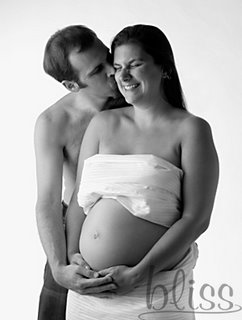 | 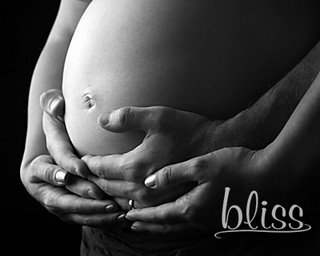 |
Posted by The Web Diva at 6:47 PM 0 comments
…girl!
Baby Anya will be joining us in October!
Profile |
It's a Girl! |
Kickin' | Hi Everyone! |
Posted by The Web Diva at 1:42 PM 0 comments
At our 12 week prenatal, we got to hear the heartbeat! Download the wma (windows media player audio file) below!
The voices you hear are me (duh), Sean, my Mom, and Carol our midwife.
Posted by The Web Diva at 1:06 PM 0 comments
We are working on a Narnian nursery for our little one! I haven't quite decided on colors yet, but overall, I have lots of ideas!
This is a place to kind of keep track of them...
Narnian shields carry a red lion rampant on a white or silver field. There is a reference however to a red lion on a green ground being used on a banner.
From the books it seems that Narnian colors were greens, yellows, and silver.
Here are some things you might find in the landscape of Narnia:
Here are some things one should never find in a Narnian Nursery or on a Narnian baby (because Amy really doesn't like them):
Posted by The Web Diva at 1:05 PM 0 comments
As many of you know, we are planning on a homebirth attended by a Certified Professional Midwife (CPM) for the birth of our first child.
Knowing that this is a less common choice, we wanted to assure you all that this is decision that has been made prayerfully, with the guidance of medical professionals, and with hours of research on our parts.
We would like to share our reasons and our research with you on this page.
First off, why?
Birth is a natural and normal process, not an illness. Although complications may occur, a pregnant woman is not sick or injured. I have no desire to give birth in a hospital setting for sick and injured people, where both the baby and I will be at higher risk of infection.
Currently, 1 in 5 hospital births in the US end in cesearean section (some estimates put this as high as 1 in 4 or even 1 in 3). Should it become medically necessary, we would be grateful that the c-section procedure exists, but we do not want an unncessary one performed. I have had abdominal surgrey twice before and I hate it.
I want to be in safe and familiar settings, with freedom to move around, eat or drink, and choose the best birthing position. Sean and I believe that a home setting with a competent, attentive birth attendant is the best possible entry for our child into this world.
Should it be discovered that I fall into a high-risk category, we will plan to go to the hospital. In case of an emergency, we are five minutes away from Salem Hospital, or around 20 minutes away from Stayton. Studies have shown that for women who live less than 30 minutes away from a hospital, there is no time difference between receiving emergency services than women in the same hospital. Either way, the doctors have to prep first!
Our Midwife
The midwife we have chosen is a Christian woman who has been delivering babies for almost as long as I have been alive - she's even delivered 5 of her own grandchildren!. She is educated, licensed and brings a wealth of information to the process. Her cesearean rate is 1-2%, and her hospital transfer rate is 10-12%, the vast majority of which is for non-progression of labor. She brings emergency equipment to the birth, such as newborn ressuscitation equipment, oxygen, suturing materials, IVs and medication for hemmorages.
Here are her certifications:
Licesened by Oregon Board of Direct Entry Midwifery as a Licensed Direct Midwife (LDM) 1994
Registered with North America Registry of Midwives (NARM) as a Certified Professional Midwife (CPM) 1994
Certified through the American Association of Medical Assistants as a Certified Medical Assistant (CMA) 1995
What is a CPM?
A direct entry midwife who has met the North American Registry Board (NARM). Requirements and passed the NARM exam and has received national certification. This midwife may also be licensed by the state in which she practices. Until recently there was no national or state exam that could provide a minimal level of competency screening for DEMs who had not graduated from an accredited school of midwifery and were not state licensed. The NARM exam certifies direct entry midwives through a skills exam as well as a competency exam.
So is it safe?
Below are links and references to support the fact that low-risk births are as safe at home as they are at the hospital.
Outcomes of planned home births with certified professional midwives: large prospective study in North AmericaFull-text article] [
Kenneth C Johnson, senior epidemiologist, Betty-Anne Daviss, project manager
BMJ 2005;330:1416 (18 June), doi:10.1136/bmj.330.7505.1416
Conclusions: Planned home birth for low risk women in North America using certified professional midwives was associated with lower rates of medical intervention but similar intrapartum and neonatal mortality to that of low risk hospital births in the United States. [NOTE - CPMs are equivalent to Licensed Midwives in some states.]
The State of California acknowledges that homebirth is a safe choice! SB 1479 ~ Amendment to the Licensed Midwifery Practice Act of 1993 APPROVED BY GOVERNOR SEPTEMBER 1, 2000
"The midwifery model of care is an important option within comprehensive health care for women and their families and should be a choice made available to all women who are appropriate for and interested in home birth."
Is Homebirth for You? 6 Myths About Childbirth Exposed
http://www.gentlebirth.org/format/mythsLinearFormat.html
Read the full article for more information on:
Myth #1 — Hospital births are statistically safer than homebirths.
Myth #2 — You can get more professional attention in a hospital than you could get at home.
Myth #3 — The more modern technology you have on hand, the easier the birth will be.
Myth #4 — A hospital is a more sanitary place to have a baby than at home.
Myth #5 — A hospital is the most comfortable place to have a baby.
Myth #6 — It's impossible to find any qualified person to assist you in having a baby at home.
Outcomes of intended home births in nurse-midwifery practice: a prospective descriptive study.
Murphy PA, Fullerton J
Obstet Gynecol 1998 Sep;92(3):461-470
CONCLUSION: Home birth can be accomplished with good outcomes under the care of qualified practitioners and within a system that facilitates transfer to hospital care when necessary. Intrapartal mortality during intended home birth is concentrated in postdates pregnancies with evidence of meconium passage.
Meta-analysis of the safety of home birth
Birth 1997 Mar;24(1):4-13; discussion 14-6
Olsen O
What is the relative safety of homebirth compared with hospital birth? Ole Olsen, a researcher from the University of Copenhagen, recently examined several studies of planned homebirth backed up by a modern hospital system compared with planned hospital birth. A total of nearly 25,000 births from five different countries were studied.
The results: There was no difference in survival rates between the babies born at home and those born in the hospital. However, there were several significant differences between the two groups. Fewer medical interventions occurred in the homebirth group. Fewer home-born babies were born in poor condition. The homebirth mothers were less likely to have suffered lacerations during birth. They were less likely to have had their labors induced or augmented by medications or to have had cesarean sections, forceps or vacuum extractor deliveries. As for maternal deaths, there were none in either group.
Place of birth
Luke Zander, Geoffrey Chamberlain.
BMJ 1999;318:721-723 ( 13 March )
World Health Organization's Summary of Research on Place of Birth
[excerpted from Care in Normal Birth: A Practical Guide Report of a Technical Working Group
http://www.who.int/reproductive-health/publications/MSM_96_24/MSM_96_24_table_of_contents.en.html
The World HealthOrganization (WHO) reports that "it has never been scientifically proven that the hospital is a safer place than home for a woman who has had an uncomplicated pregnancy to have her baby. Studies of planned home births in developed countries with women who have had uncomplicated pregnancies have shown sickness and death rates for mother and baby equal to or better than hospital birth statistics for women with uncomplicated pregnancies."
"Increasing Access To Out-Of-Hospital Maternity Care Services Through State-Regulated and Nationally-Certified Direct-Entry Midwives"
Introduction and Author bios for the APHA Resolution article
After five years of revising and refining, the resolution “Increasing Access To Out-Of-Hospital Maternity Care Services Through State-Regulated and Nationally-Certified Direct-Entry Midwives” was approved by the American Public Health Association (APHA) governing Council. The text of the resolution, including the footnotes, is provided at http://www.cfmidwifery.org
Infant Mortality Rate: The United States is in 36th place among developed nations of the world.
http://www.geographyiq.com/ranking/ranking_Infant_Mortality_Rate_aall.htm
David Stewart reported in the NAPSAC News that the national infant mortality rate in 1991 was 8.9 deaths per 1000 live births. Washington D.C. had the highest mortality 21 deaths per 1000 births. The state with the lowest death rate was Vermont, with only 5.8. "Vermont also has one of the highest rates of home birth in the country as well as a larger portion of midwife-attended births than most states." Stewart adds that "the international standing of the U.S. did not really begin to fall until the mid-1950s. This correlates perfectly with the founding of the American College of Obstetricians and Gynecologists (ACOG) in 1951."
Marsden Wagner states that the countries with the lowest perinatal mortality rates in the world have cesarean section rates below 10%. The United States' cesarean rate is 25%. Obviously medical interventions, including cesarean section, are not doing for women what doctors claim.
Unnecessary Medical Interventions
The research shows that lower intervention rates are achieved at home, making for a more natural, gentle birth experience for mother and baby. Overuse of interventions in low-risk deliveries have iatrogenic results, meaning the intervention caused more problems than it was supposed to remedy. A.M. Duran stated in The Farm Study, published in the American Journal of Public Health in March 1992, that "home births attended by lay midwives can be accomplished as safely as, and with less intervention than, physician-attended hospital deliveries." Dr. Lewis Mehl compared matched populations of 2,092 home births and 2,092 hospital births. Midwives and family doctors attended the home births, while OB/GYNs and family doctors attended the hospital births. Within the hospital group, the fetal distress rate was 6 times higher, maternal hemorrhage was 3 times higher, limp unresponsive newborns arrived 3 times more often and there were 30 permanent birth injuries caused by doctors. In another study, Dr. Mehl compared matched groups of 1,046 home births with 1,046 hospital births. There was no difference in infant mortality. In the hospital births, there was greater incidence of fetal distress, lacerations to the mother, neonatal infections, forceps delivery, cesarean section, and nine times as many episiotomies.
What About "Emergencies"?
Birth isn't without risk. There is a slight risk that a major catastrophe could happen which could possibly be better handled in the hospital, such as umbilical cord prolapse, uterine rupture, abrupted placenta, postpartum hemorrhage. Birth is generally a slow process and there is usually ample time to transport even in the case of a true emergency. A skilled midwife provides one-on-one care and monitors the laboring woman carefully for potential problems.
Shoulder dystocia is handled better at home because of the freedom of birthing positions. If there are signs of trouble, a midwife can easily and quickly help the birthing woman get onto her hands and knees (the Gaskin maneuver, named for Farm midwife Ina Mae Gaskin). In the hospital, the beds aren't as adequate for allowing this type of position change.
The baby's oxygen supply is preserved at home by delaying umbilical cord cutting. In the hospital, the cord is cut immediately, increasing the need for resuscitation efforts.
Postpartum hemorrhage can be remedied at home by putting the baby to the breast immediately to stimulate oxytocin production and uterine contractions. Compression of the uterus can also be done at home. Some midwives carry IVs or an injection of Pitocin for these circumstances.
For true emergencies that require transport to the hospital, women laboring at home 20 minutes from the hospital have the same access to emergency surgery as women laboring at that same hospital. Many hospitals cannot prepare for an emergency surgical delivery in less than 20 minutes. The ACOG standard is currently "30 minutes decision to incision" for all non-scheduled cesarean sections.
The 1992 House of Commons Select Committee on Maternity Services,
now known as the Winterton report, went to the heart of the issue in the first of more than 100 recommendations and conclusions on pregnancy, labour and postnatal care.
"On the basis of what we have heard, this Committee must draw the conclusion that the policy of encouraging all women to give birth in hospitals cannot be justified on grounds of safety."
Elsewhere the report went further. "There is no convincing or compelling evidence that hospitals give a better guarantee of the safety of the majority of mothers and babies. It is possible, but not proven, that the contrary may be the case."
A doctoral thesis comparing safety and costs of natural, out-of-hospital birth with in-hospital obstetric births. He finds out-of-hospital births to be slightly safer and significantly superior in terms of economic costs ($13 billion annually) and social costs (reduced incidence of birth trauma and bonding disorders).
Home superior to hospital birth
"Among low-risk women, home births assisted by certified midwives achieve similar rates of intrapartum and neonatal mortality as hospital births, with lower rates of medical intervention, reveal Canadian researchers." [from obgynworld.com]
In contrast to the ACOG position, the American Public Health Association passed a resolution in 2001 to increase access to out-of-hospital birth attended by credentialed direct-entry midwives. They based their decision on the weight of evidence about home birth demonstrated in the home birth studies carried out with better methodologies than were used in the Washington study.
In response to: "Is homebirth safe?" - Ronnie Falcao, LM MS, a homebirth midwife in Mountain View, CA
Rather a large number of studies have been done on this. To date, the studies show, without exception, a lower rate of mortality and morbidity for mothers and infants in all risk categories with home birth.
This runs counter to what we believe as a society: that hospitals are safer, and the right place to have a baby. All cultures have strong beliefs about the "right" way to give birth. From the outside, the beliefs of others may seem ridiculous. From the inside, anything else seems dangerous and weird. The US has very poor outcomes for a developed nation. We make up a lot of reasons why this must be so, but rarely face the fact that our birth practices are not the best.
Who does have the best? The country with the best statistics, by far, is Holland. They have about a 30% home birth rate. Pregnant women see a midwife first. The midwife is the "gatekeeper", and refers high risk mothers to OB/Gyns, who do hospital births. Healthy mothers birth at home. A significant factor in the good outcomes for infants is the birth assistant, who does light housework for a week after the birth, sparing the mother and allowing her to spend her energy bonding with her infant. The birth assistant is also a trained observer, who can detect unusual problems and alert a pediatrician, teach breast feeding techniques, etc.
How can home birth be safer than hospital birth? Most "problems" in hospital births come about due to "failure to progress". This leads to interventions, and interventions have consequences and side effects. In the hospital, this often leads to more interventions, etc. Why failure to progress? Imagine for a moment that your cat is about to have kittens. It will seek a warm comfortable place, where if feels safe. Imagine you bring it out into a strange, brightly lit area full of strangers, who poke it and examine it. Do you think it will give birth? Or will this profound and difficult process be interrupted while it takes in its new surroundings?
You certainly are safer giving birth with a trained practitioner, who has a deep understanding of the psychology and physiology of birth, who knows when to transport to a hospital, how to intervene if needed, has a certificate in infant resuscitation, knowledge of and license to use pitocin and suture, etc. And you are safer giving birth within a short transport of a hospital, should one be needed. Most licensed midwives in the US have post-graduate training, and are experts in normal birth, and will transfer you to the hospital from a home setting right away if your birth is not progressing normally.
But healthy mothers are generally safer at home. It defies what most of us believe, but the statistics bear it out.
What About the ACOG and the Washington State Pang Study?
Lest you think I am cherry-picking the results, we are aware of the Pang study:
Outcomes of planned home births in Washington State: 1989-1996.
Pang JW, Heffelfinger JD, Huang GJ, Benedetti TJ, Weiss NS.
Obstet Gynecol 2002 Aug;100(2):253-9
"This study suggests that planned home births in Washington State during 1989-1996 had greater infant and maternal risks than did hospital births."
Key points:
More links:
When Research is Flawed: The Safety of Home Birth by Henci Goer
Press Release from Midwives Alliance of North America (MANA)
Homebirth: Is it really a safe option? from ivillage.com
A Comprehensive Review & Critique on the Pang-Benedetti Study on Home-based Birth from Faith Gibson's site
Homebirth Research and Resources from the Seattle Midwifery School contains a number of rebuttals to the Pang study.
Posted by The Web Diva at 1:03 PM 1 comments
We've already been thinking about names for a long time - they are chosen, but we have decided not to share the middle names until the baby is born.
For a girl:
Anya
meaning: gracious
ahn-ya
For a boy: Xander
meaning: short for Alexander, protector of men
zan-der
Until we know: Nibblet
Yes, both names are from Buffy, although Alexander is also for Alexander the Great!
How did we choose them?
We both really like the name Alexander, but Alex is a very common nickname for it. We like the name Xander because of the character on the TV show, Buffy the Vampire Slayer. Xander is the goofball of Buffy's gang, and the only one who is human with no superpowers. Yet he fights the good fight against evil, and is the heart of the Scooby gang. Xander is the most loyal of friends, and is always someone you would want at your back. He saves the world through his willingness to sacrifice himself for his best friend, Willow.
Anya is another BtVS character. She started out as human, but became a vengance demon for over a thousand years. After she becomes human again, she is an insight into the human character with her blunt honesty, as she has forgotten the niceties of human interaction. Her crawling steps towards the light, towards becoming part of the fight against evil show the power of redemption. When she first appears in the series, she scampers away from an apocolypse to save her own skin. Later, even when her powers are returned, she chooses good over evil. In the final episode of the show, she stays to face the First Evil and dies protecting a human, and is honored as a fallen hero. She is a strong, honest, brave and funny woman.
That and we just like the way the names sound.
Last Name:
Yes, the baby's last name will be Beebe. This was the compromise for me to get the middle name I wanted, which is a secret until the birth!
Posted by The Web Diva at 1:02 PM 0 comments
"For you created my inmost being;
you knit me together in my mother's womb.
I praise you because I am fearfully and wonderfully made;
your works are wonderful,
I know that full well."
Psalm 139:13-14
We would like you to
share in our joy,
whether it will be a girl or a boy!
With praises on our lips and joy in our hearts,
we are thrilled to annouce our first baby is due
on or around October 11, 2006
Posted by The Web Diva at 1:00 PM 0 comments
 |  |
 |  |
Posted by The Web Diva at 7:09 PM 0 comments
Professional Blogger Web Templates by DesignAvatar.com
Additional footer information goes here.